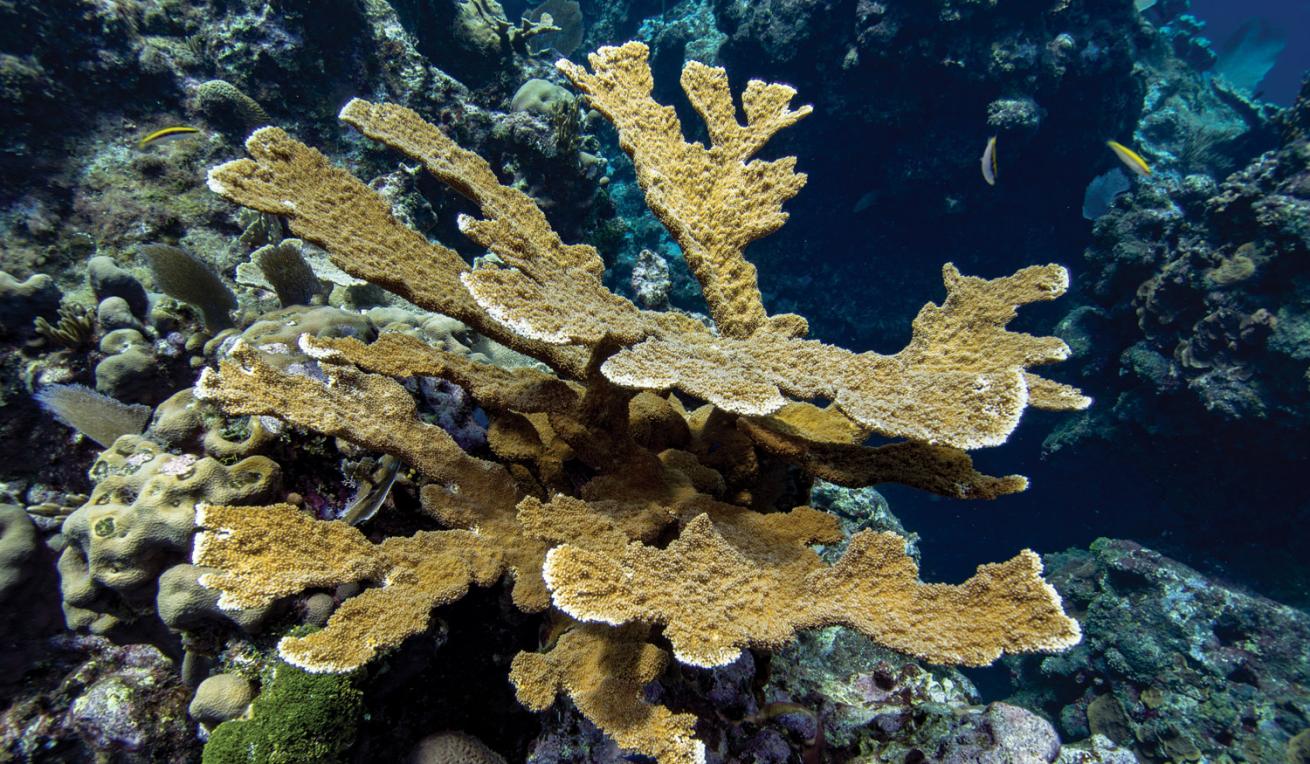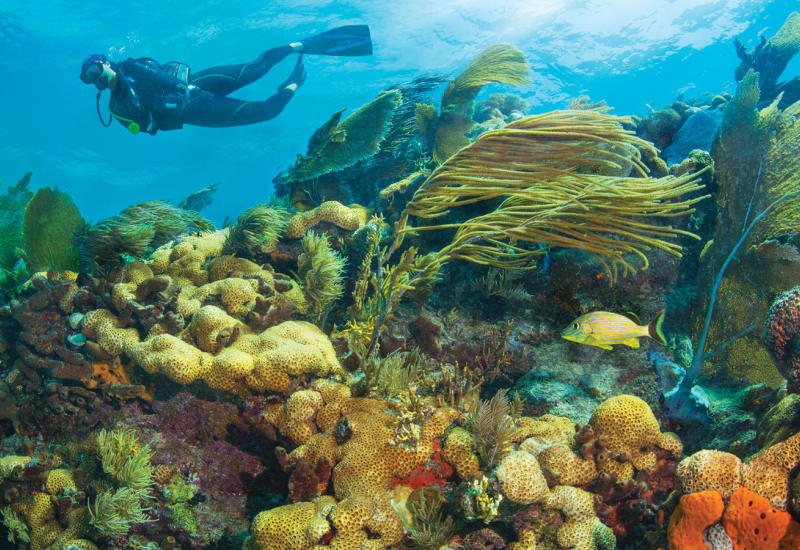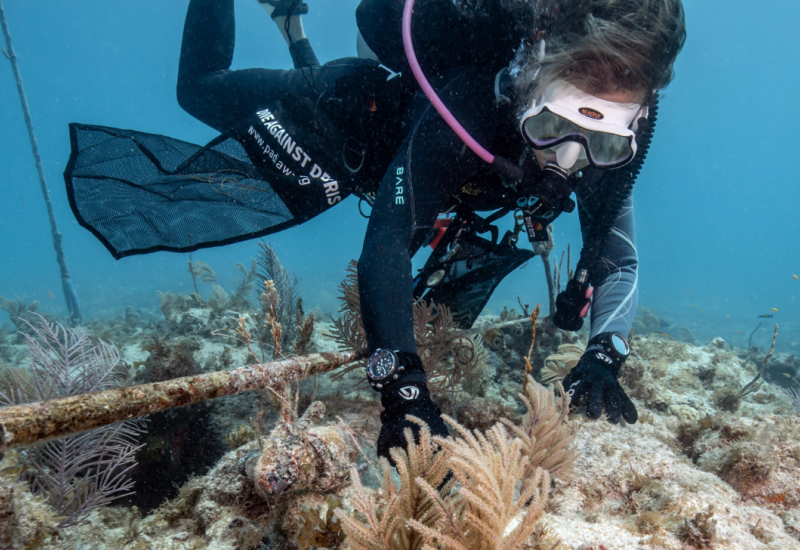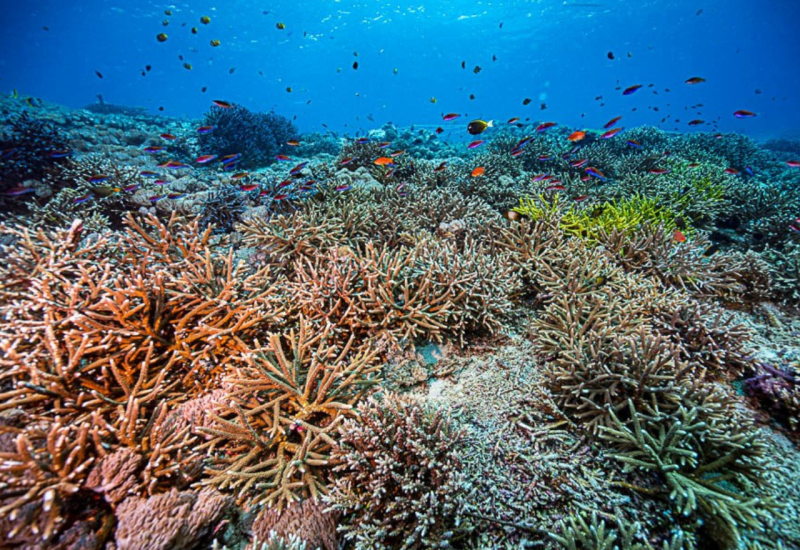How to Identify Elkhorn Coral (Acropora Palmata)

Nicole HelgasonAcropora palmata (Elkhorn Coral)
• Acropora palmata is the king of all Caribbean corals. It grows into thick, robust branches and is the most important reef-building species in the Caribbean. The common name for this coral is the elkhorn coral because the wide branches resemble an impressive rack of elk antlers.
• Mature branches of elkhorn coral provide complex habitat and hiding spots for juvenile fishes, crustaceans and other marine life. In adult colonies, each branch can be a foot wide and several feet long. However, like all corals, no two colonies are the same.
• When elkhorn coral is healthy and several colonies are growing together, their size helps to buffer coastlines from storms and waves. Elkhorn corals love the sunlight and grow in shallow environments either close to shore or at the top of a reef crest.
• Acropora palmata was once a dominant species in the Caribbean, but unfortunately there has been a 90 to 95 percent reduction in abundance since 1980. This coral is now listed as critically endangered on the IUCN Red List. Several restoration projects around the Caribbean are now focusing on growing Acropora palmata fragments and collecting elkhorn coral spawn for coral-restoration efforts.
• If you are trying to identify corals, Acropora palmata is the best place to start. This species has a one-of-a-kind appearance unlike anything else in the Caribbean. Colonies are golden yellow to dark brown and grow to an impressive size. I’ve even found a few colonies up to 20 feet wide.










